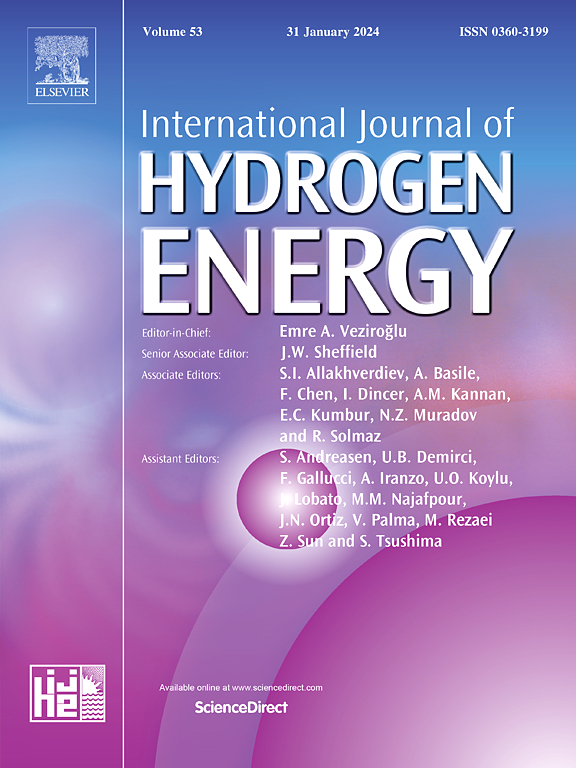Green hydrogen production in offshore environments: A comprehensive review, current challenges, economics and future-prospects
IF 8.1
2区 工程技术
Q1 CHEMISTRY, PHYSICAL
引用次数: 0
Abstract
Green hydrogen (GH) production in offshore environments refers to the use of renewable resource, particularly offshore wind, to generate hydrogen through electrolysis. This approach offers advantages such as high renewable capacity, minimal land use, and potential repurposing of existing oil and gas infrastructure. However, significant challenges include the need for durable electrolyzers, high infrastructure costs, and regulatory considerations. Offshore GH remains more expensive compared to onshore alternatives, with a levelized cost of hydrogen (LCOH) between $4 and $6 per kg for offshore GH compared to $2 to $3 per kg for onshore production. Moreover, high capital and maintenance costs, as well as hydrogen transport losses, contribute to this disparity. Nevertheless, advancements in electrolyzer technology and offshore wind energy whose global capacity surpassed 64 GW in 2023 may also have constituted some measure of reduced costs. The efficiency of GH production from electrolysis currently ranges from 60 to 70 %, with proton exchange membrane (PEM) electrolyzers offering higher operational flexibility. By 2035, the LCOH is expected to drop to $2.5–$3.5 per kg, driven by improved electrolyzer efficiency, increased offshore wind deployment, and government support. Offshore GH holds promises for decarbonizing hard-to-abate sectors, making it a crucial component of the global energy transition agenda. With continued innovation and investment, offshore GH could become a competitive and sustainable energy solution in alignment with net-zero goals.
求助全文
约1分钟内获得全文
求助全文
来源期刊

International Journal of Hydrogen Energy
工程技术-环境科学
CiteScore
13.50
自引率
25.00%
发文量
3502
审稿时长
60 days
期刊介绍:
The objective of the International Journal of Hydrogen Energy is to facilitate the exchange of new ideas, technological advancements, and research findings in the field of Hydrogen Energy among scientists and engineers worldwide. This journal showcases original research, both analytical and experimental, covering various aspects of Hydrogen Energy. These include production, storage, transmission, utilization, enabling technologies, environmental impact, economic considerations, and global perspectives on hydrogen and its carriers such as NH3, CH4, alcohols, etc.
The utilization aspect encompasses various methods such as thermochemical (combustion), photochemical, electrochemical (fuel cells), and nuclear conversion of hydrogen, hydrogen isotopes, and hydrogen carriers into thermal, mechanical, and electrical energies. The applications of these energies can be found in transportation (including aerospace), industrial, commercial, and residential sectors.
 求助内容:
求助内容: 应助结果提醒方式:
应助结果提醒方式:


